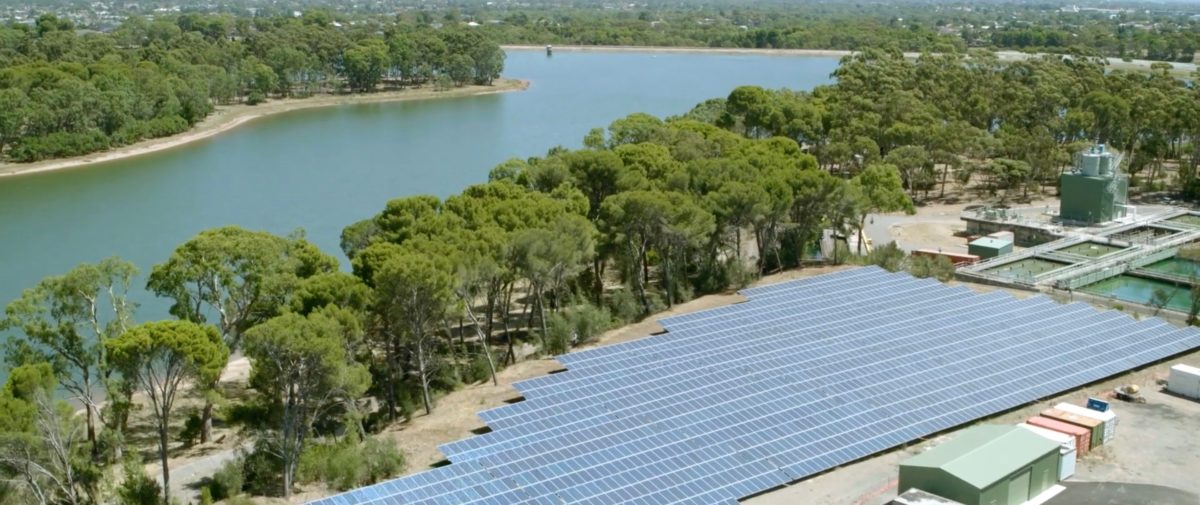Researchers at the University of Queensland’s (UQ) School of Chemical Engineering have sought to quantify the amount of on-site renewable electricity generation in the Australian water industry, finding solar PV to be among the most adopted sources of electricity.
According to a paper published in the Journal of Cleaner Production, UQ researchers found that in 2018 (the study’s focus year), the Australian water industry generated 18% (279 GWh/y) of its electricity demand from on-site renewable electricity sources.
Biogas from anaerobic digestion of wastewater and sewage sludge tops the list, accounting for 67% (187 GWh/y), and a further 2% (5.5 GWh/y) of biogas is generated from co-digestion and waste-to-energy through anaerobic digestion of organic feedstock. However, UQ’s researchers believe these quantities will stagnate due to the limited economies of scale in the recovery of biogas from wastewater and sewage sludge.
Hydropower is responsible for 30% (84 GWh/y), a figure likely to rise. Meanwhile, researchers found that solar PV only generates 1% (2.2 GWh/y), although researchers also discovered that solar PV is now the most adopted source of electricity by the water industry. Despite this, the study’s abstract suggests space limitations will hinder further uptake of solar PV. This seems a specious argument given a further year of hindsight in the rapidly advancing world of solar PV.
After all, in 2019, the year proceeding the researchers’ focus, thirteen of Victoria’s water corporations partnered to buy clean energy from the Kiamal Solar Farm. Such a deal proves space limitations are no hindrance to solar PV uptake. And only this week SA Water, South Australia’s largest water and sewage services supplier and one of the state’s largest electricity users, announced plans to invest more than $300 million in solar PV and energy storage. The investment is set to roll out over the next year as SA Water seeks to achieve its ambitious zero energy cost future.
The UQ study has shown that Australia’s water industry has already begun to implement on-site renewable energies but that there is still a long way to go. What the study also found was a great source of encouragement, the knowledge that Australia’s water industry is almost uniquely adaptable to renewable energies, and, as such, should lead the way to Australia’s renewable reindustrialisation.
This content is protected by copyright and may not be reused. If you want to cooperate with us and would like to reuse some of our content, please contact: editors@pv-magazine.com.









By submitting this form you agree to pv magazine using your data for the purposes of publishing your comment.
Your personal data will only be disclosed or otherwise transmitted to third parties for the purposes of spam filtering or if this is necessary for technical maintenance of the website. Any other transfer to third parties will not take place unless this is justified on the basis of applicable data protection regulations or if pv magazine is legally obliged to do so.
You may revoke this consent at any time with effect for the future, in which case your personal data will be deleted immediately. Otherwise, your data will be deleted if pv magazine has processed your request or the purpose of data storage is fulfilled.
Further information on data privacy can be found in our Data Protection Policy.